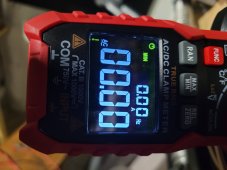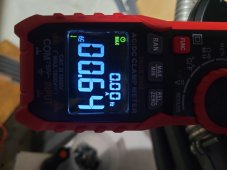Hello.
The wattage measured by a non- reactive power compensating meter is higher than what is actually used.
The amps measured are reactive power.
If you put an in-line kwh meter on your AC input side the idle consumption will be the listed idle on the spec sheet.
this is nothing to do with the inverter and everything to do with the meter being used; the grid load shown is a product of the 3rd party software doing the A x V math without realizing that PF is wrong.
@timselectric @robby @WindWizard





